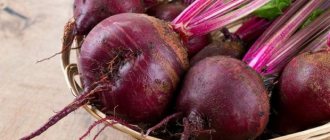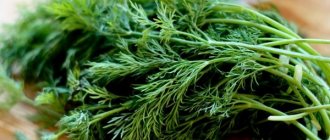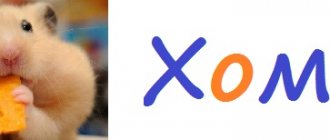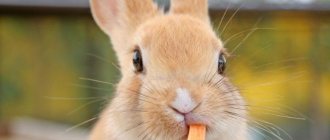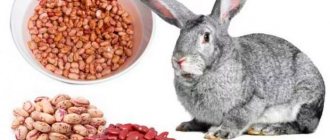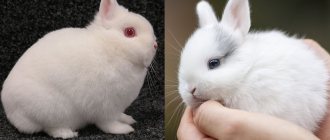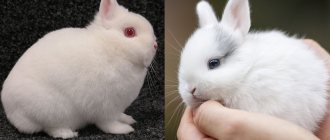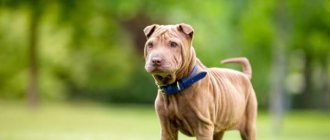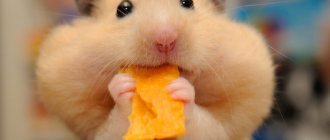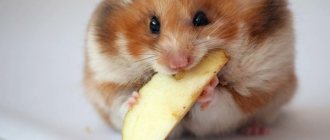It so happened that the chinchilla cannot choose its fate - either to live a full, happy life, or in the prime of life to give its skin for a fur coat. A person decides for her. Yes, due to the harsh climate in its natural habitat, it has very warm, soft and beautiful fur, but let’s still admire it on the animal itself, which will delight you for up to 20 years - that’s how long they live in captivity. Moreover, in our time, these beautiful animals are not in short supply - you can buy chinchillas in our country in various nurseries, for example, the St. Petersburg nursery “Shinchilla Land”.
Rodent of the chinchilla family
Cell preparation
Before purchasing an animal, a cage for the chinchilla should already be prepared. This will be her home, a home and a refuge in which she will sleep, eat, bathe and give birth.
Large cage for chinchilla
Therefore, there are certain requirements for the cage:
- The cage should be located in a cool place. Chinchillas cannot tolerate heat; the optimal air temperature for them is 20 degrees. If it is 25 degrees in the cage, then the animal will overheat its body; at 30 degrees it will die;
- The size of the cage should be approximately 50x50x100 cm, that is, it must be of a tower type, greater in height than width and depth. This is a very active animal; the cage must have floors with stairs so that it can run a lot;
- If possible, try to hang the feeder and water bowl, otherwise the chinchilla may turn them into a toilet;
- There should always be a piece of chalk or a special stone in the cage for grinding down teeth. You can buy it at any pet store;
- The bottom of the cage should be lined with sawdust. The animal goes to the toilet anywhere, they cannot be tamed to the toilet, so the sawdust will have to be changed often. Although some people succeed in toilet training;
- They have fur that is very sensitive to dirt; it even reacts to sweaty human palms. Therefore, the animal often bathes, but not in water, but in special zeolite sand. They do not require water for these purposes.
Taking sand baths
Special sand for bathing
By the way, when taking sand baths, chinchillas are so violent that dust will fly in all directions. It is not advisable to carry out these procedures in a cage so as not to clean up later. The ideal solution is a three-liter jar. We poured sand in a layer of 5 cm, put the animal in there, and left it in a cool place for an hour. Although the duration can be reduced to half an hour, but not less.
Chinchilla bathes in the sand
A chinchilla should be bathed at home a couple of times a week. If your home is hot (i.e. about 25 degrees) and there is high humidity, then you should bathe every other day. The thing is that the animal does not have sweat glands, and without these procedures you can forget about beautiful, healthy fur.
In the wild, they bathe in volcanic dust, but never in sand. And at home, you also need to follow this rule - only special sand. If you add regular river water, you will get at least two problems:
- Skin diseases, fungus;
- Ugly, chewed, tousled fur, as if the chinchilla had been in a centrifuge.
A visual technique for a sand bath
For preventive purposes, for example, against lichen, the antifungal drug fungistop is sometimes added to the sand in the proportion of 1 large spoon of the drug per 1 kg of sand.
Animal behavior at home
Chinchillas require much less care than, for example, . The main thing is to keep it cool. If the animal is released from the cage, it will immediately begin to explore every crevice in the room, because... their ancestors lived in endless labyrinths of rock slides that appeared after volcanic activity and earthquakes.
Please note that they try everything to their teeth, this is the instinct of a rodent, so you should not leave them outside the cage unattended. Cases of biting live wires with inevitable death are very common.
Chinchillas don’t really need to communicate with people, they are somewhat cowardly animals, and prefer to play with themselves, simply running around the floors of the cage and gnawing everything in sight (that’s why a spacious cage is needed). Also keep in mind that this is a very shy animal and can die from fright.
Also, you should not pick up a chinchilla by the back, because... she may shed her fur. Here, for example, is a chinchilla, photo below, which did just that:
Chinchilla shed a tuft of fur
This is normal, so they have a chance to escape from the predator's mouth. Even though we are not going to eat them, the instinct remains. But let us warn you again - they die from severe fright! And being grabbed by the scruff of the neck from behind is also frightening.
Domestic chinchillas are mostly nocturnal, so get used to the nightly rustling, squeaking, and stomping that can last half the night.
Additional feeding requirements for chinchillas
If you provide your chinchilla with timely and high-quality food, this does not mean that it will develop 100% correctly and live a long time. It is necessary to take into account additional requirements for feeding chinchillas and constantly monitor the condition of the animal.
- Remove leftover food from chinchillas and change bedding as often as possible. If this is not done, then mold and rot may develop in the food and bedding, which will instantly lead to digestive diseases.
- When cleaning, pay attention to the size of the bolus; if they seem runny or smaller than usual, then you need to take action. You can leave a couple of boluses and after 1-2 days compare them with fresh ones; if the sizes remain the same, then everything is in order. If the boluses have become smaller or softer, then it is necessary to look for symptoms to identify the disease. Of course, it is best to show the animal to a veterinarian, but since not everyone has the opportunity, you just need to monitor the animal’s condition and determine the disease based on obvious symptoms.
- You should not suddenly change your chinchilla's diet. If you need to change food, you need to change it gradually. Start feeding ¼ new food and ¾ old food. After a week, if there are no changes in the chinchilla’s behavior, then you can give the old and new food 50/50, and after another week, start giving only the new food.
Source
Chinchilla nutrition
What does a chinchilla prefer for lunch? In this matter, it’s just a gift for the pet owner - they are herbivores, they need very little for food:
- Fortified ready-made food;
- Vegetables fruits;
- Dried fruits (especially raisins);
- Nuts (in limited quantities);
- Bread, bran, seeds;
- Fresh water in the sippy cup.
They eat only once a day, a couple of tablespoons of food. They also don’t drink a lot of water, but it needs to be changed regularly, at least once a day.
Chinchilla's meal
Do not forget to place a special stone for the teeth in a timely manner, otherwise the incisors will grow so large that the animal will not be able to eat, and you will have to go to the veterinary hospital to have them ground down.
Diet example
A person will not like to eat the same food every day. Not everyone can eat buckwheat for a week, for example. So why subject your pet to the same torment? A chinchilla needs a complete and varied diet. It will not only be tasty for the animal, but also healthy. Do not forget that the pet is fed once a day in the evening, when the animal is awake .
On the first day, you should give your pet 15 g of granules. 5 g of rose hips and the same amount of a mixture of corn and sunflower seeds will help supplement the required daily amount of food.
The second day is 20 g of granulated food and 10 g of dried apple.
The diet for the next day consists of 10 g of food in granules, 1/2 walnut kernels and 10 g of a mixture of oatmeal and flax seeds.
There are a lot of menu variations. Use approved ingredients and pleasantly surprise your pet every day.
Chinchilla and its colors
Not everyone knows that chinchilla is a whole family of rodents. There are both chinchilla breeds and interbreed mixtures. There are more than 14 of the former, 12 of the latter.
In principle, they are no different except for color. Their fur color is very diverse:
- White;
- Black velvet;
- Brown velvet;
- White-pink;
- Sapphire;
- Beige;
- Violet.
Purple color of a chinchilla
If you cross chinchillas of the same color, then this color is passed on to all the babies, so for experiments it is better to choose multi-colored mom and dad. But there are cases, although rarely, when the color of the children is neither mother nor father. This happens when they pass on the color gene from their grandparents.
Animal Reproduction
A pregnant female carries children for about 120 days, during which time she gains weight well. There can be from 1 to 6 children in a litter.
An interesting fact is that after giving birth on the same day, the female begins to demand a male for the next fertilization. It’s up to you to decide whether to add a male or not, but you need to adhere to the rule: no more than two births per year. A larger amount puts a greater burden on the female’s body.
Chinchilla babies
During the first days after birth, children eat only mother's milk. But in a female, not all mammary glands work, but only the first pair, very rarely - two pairs. Stronger children push away weaker ones, and there are often fights between them. In such cases, you must either ensure that all children receive milk and control this process, or feed them with artificial formula from a bottle.
Feeding the baby
Breastfeeding can last up to two months, then the grown-up offspring completely switches to an adult diet.
Something to chew on
The chinchilla needs to be given something to chew on. To do this, you need to give twigs or blocks of safe trees and stones with minerals that are sold for rodents. If you don't provide them with wood, they will chew on shelves and other things in the cage, because it is vital for them to grind down their teeth.
The easiest trees to find in our area that are safe for chinchillas are:
- Apple tree
- wild apple tree
- Pear
- Nut
- The rest of the list of trees that can be given to them, but they are rarely found here.
Before giving chinchillas twigs or tree dies, they must be poured with boiling water and cleaned with a stiff brush so that excess dirt and harmful bacteria are removed. Next, you need to dry them in the oven or electric dryer.
If you use tree dies, you need to fasten them together with aluminum wire, making holes in the middle. And the branches just need to be thrown into the cage.
In addition to pieces of wood, they can also buy something like crayons that contain calcium. It’s better not to look for them yourself, but to buy them at a pet store so that they can tell you which stone will suit your rodent.
Benefits of chinchillas
If you are still in doubt about choosing a pet, here is a general list of the advantages of chinchillas:
- Sometimes it is cheaper to buy a chinchilla, the price of which starts from 1000 rubles, which is very inexpensive;
- Always neat appearance (with regular swimming in the sand);
- Due to the absence of sweat glands, there is virtually no odor;
- The absence of seasonal molts classifies this animal as hypoallergenic;
- Chinchillas do not bite or scratch.
And remember - we are responsible for those we have tamed!
Caring for a chinchilla at home
In recent years, keeping chinchillas at home has become very popular and fashionable. This cute pet furry animal has become a real favorite of both children and adults. If you already have a chinchilla in your home, or you are just going to get to know one better, here are some useful recommendations on how to care for this animal at home...
First of all, let's figure out what kind of animal this chinchilla is...
The chinchilla belongs to the order of fur-bearing animals; its maximum height can reach thirty-eight centimeters, and its weight can be up to five hundred grams.
Chinchillas have very beautiful fur of a wide variety of colors, from white to velvety black. With proper care, these small animals live from fifteen to twenty years.
So, we already have a general idea about the chinchilla, now let’s talk about how to provide this pet with the most comfortable living under the same roof with a person. A chinchilla, like any domestic animal, needs its own home.
A chinchilla’s home can be a spacious metal cage (the approximate dimensions of such a “house” are 70x50x70). For ease of cleaning, it would be nice if the tray of the cage is retractable. Many chinchilla owners let their animals roam around the house or apartment, but even with this regime of free movement, the animal needs a home where it can rest or hide from prying eyes.
Chinchillas love sawdust.
Therefore, stock up on these. The tray in the cage is lined with sawdust. Sawdust can be anything except oak. It is necessary to change such a carpet in a chinchilla’s house as needed, but the more often you do this, the cleaner it will be in your pet’s cage and in your home.
Now, about what must be in the cage...
This is a special drinking bowl, which should contain clean drinking water (it is better to change the water twice a day), a plate for food, a “bathing bowl” or bath and a shelf or special elevation on which your chinchilla will sleep. Wet cleaning of the cage (but without using chemical cleaners - replace them with ordinary soda) should be done twice a week. Then the chinchilla will not bring any smell, no garbage and no microbes into your home.
We mentioned that the cage should have a special bath - a “bathing bath”. But don’t rush to fill it with water. This can cause irreparable harm to the animal's health. Fill the bath with special fine sand. It is sold in specialized pet stores, or you can take ordinary sand, sift it and calcinate it. After such sand procedures, the animal’s fur shines and shimmers. You cannot bathe a chinchilla in water!!!
Zoologists explain this intolerance to water by the fact that the chinchilla’s homeland is an arid climate zone with low humidity.
Therefore, high humidity can cause chinchillas to become ill and even die. Chinchilla owners are advised to take care to provide their animal with a suitable temperature and humidity regime. The most optimal and useful indicators for a healthy and happy life for a chinchilla are considered to be temperatures not lower than twenty degrees Celsius and not higher than twenty-five degrees Celsius, the humidity level should correspond to fifty-five to sixty percent.
Despite the fact that the chinchilla is an affectionate, sweet, domestic furry animal, you should not pick it up too often
– this can cause harm to your pet’s health. Try to express love and care in other accessible ways.
The diet of this animal should consist exclusively of plant products.
– grains, herbs, vegetables. You can give your chinchilla crackers to chew on. Chinchillas love to chew branches of trees and bushes, so pamper your pet with such a delicacy for him. The chinchilla not only receives nutrients from the branches, but also sharpens its teeth. Speaking of teeth... Your chinchilla's cage must have a special stone with which the animal will grind down its teeth. Otherwise, dental problems and various diseases can shorten the chinchilla’s lifespan.
How many times a day should a chinchilla be fed?
Veterinarians and specialists in breeding these animals at home come to a common opinion on this issue - one meal a day for a chinchilla will be enough. By overfeeding an animal, you do not benefit it; rather, on the contrary, it causes harm. In order for a chinchilla to look luxurious, its fur needs to be looked after. If she is able to carry out the sand procedures herself, then you should definitely help her with combing the fur. Special combs with long teeth are perfect for this. Don’t also forget that your pet is a nocturnal animal that is used to being quite active at night and, on the contrary, sleeping quietly during the day. Therefore, you should not place a cage with a chinchilla in the bedroom or in the nursery, of course, if the rustling of the chinchilla does not have a soothing effect on you.
People who are allergic to animals and small children should not get a chinchilla.
The latter must grow up a little more in order to understand that a chinchilla is not a toy, but a living creature.
Any pet in your home means responsibility, care and care, but it also means joy and positive emotions.
Shevtsova Olga
This is a properly selected diet. Its health and life expectancy directly depend on what the animal eats.
The chinchilla is a herbivore and the main food in the wild is plants, namely: cereals, legumes, shrubs, mosses, cacti and other vegetation. Therefore, at home, a chinchilla’s diet must be carefully thought out so that all vitamins and nutrients are balanced. When choosing specialized food for chinchillas, pay attention to its composition. Main Components
This food consists of grass meal and grain crops: oats, wheat, barley, corn. Legumes that work well include peas, lentils, and beans. In addition to plant foods, your chinchilla’s diet should include food of animal origin: milk powder, fish and meat and bone meal. Food for the animal must be varied and consist of at least 5 components.
You can prepare grain mixtures yourself, but for this you will need high-quality grain. If you are not sure of the good quality of the grains, then it is better not to feed them at all. Because the animal can easily get poisoned.
In addition to basic foods, you need to feed your chinchilla various goodies. Favorite treats for chinchillas
- dried fruits, namely raisins, dried apples, pears, rose hips, hawthorn, prunes, dried cherries, dried apricots. Ordinary fruits are also suitable as treats: banana, apple, pear, melon. All treats must be given on a special schedule. For example, 1-2 times a week one hawthorn or rose hip berry, 2-3 times a week a dried or fresh apple or other fruits or dried fruits.
Vegetables are also good for chinchillas
, for example, carrots, beets, potatoes. Only they should be given in moderation - 1-2 times a week, a small piece with the main food. They give the animals nuts: peanuts, hazelnuts, hazelnuts, walnuts. They cannot eat only pine nuts; due to their fat content, the animal may have stomach problems.
Necessary component
Chinchillas feed on hay and green grass. Before giving fresh grass to your chinchilla, it needs to be slightly dried out. Fresh grass is very poorly digestible, and the animal can be poisoned.
The chinchilla should be fed once a day. The feeding schedule should be drawn up for the evening, since the chinchilla is a nocturnal animal and is only awake in the evening. The daily portion is 1 teaspoon of main food, 20-30 grams of hay, and a choice of one of the treats. Also, the animal should always have clean filtered or boiled water in its drinking bowl.
In addition to food, vitamins or vitamin supplements should be included in your chinchilla’s diet. In order for the animal to have the opportunity to grind down its incisors, be sure to gnaw on branches of willow, apple, birch, rowan, pear, plum and other tree species. You should not give coniferous branches; they contain resins that are toxic to chinchillas. Also, a special sharpening stone, which can be bought at any zoological store, is suitable as a teeth sharpener.
If you follow all the rules of feeding, your chinchilla will live a long life and give you a lot of positive emotions.
Chinchillas, although they are rodents, are not omnivores. When buying an animal, you need to understand that its health will depend entirely not only on the correct conditions of detention, but also on proper feeding. Therefore, every breeder should know what can be given to chinchillas, and what foods are prohibited and even dangerous.
What should the portion be?
The standard portion for an adult is up to 30 grams of food. For young chinchillas, 20 grams is enough. What can you feed a chinchilla besides food? In addition to grain nutrition, you can give your pet vegetables and pieces of fruit, and special food for medium and large rodents. They can be found at any pet store.
If the animal does not eat all the food offered, gradually reduce the portion. Food should not stay in the chinchilla's cage for a long time, because otherwise it will stock up. They will decompose fairly quickly, creating an unpleasant odor in the room.
Useful! Separately, it is necessary to provide the animal with a feeder with hay and a drinking bowl for chinchillas, stably filled with clean drinking water.
Prohibited Products
Persimmons are prohibited for feeding. This fruit, useful for humans, is rich in iodine, which is contraindicated for animals. In addition to iodine, persimmons contain a lot of sugar and astringents, which will lead to constipation.
The root vegetable is healthy, but has a laxative effect. In rare cases, small pieces of beets can be given for constipation. Any type of cabbage leads to severe gas formation. Chinchillas love to feast on tea rose petals - they taste pleasant and have an attractive aroma. If flowers are grown in your own garden, there is no danger, but it is better not to give store-bought ones. They contain a lot of pesticides and chemicals that can cause serious poisoning.
When preparing tree branches for the winter, it is worth remembering which species are dangerous and unsuitable for feeding. Branches of which trees cannot be harvested:
- Apricot,
- white acacia,
- Beech,
- Ash leaf maple,
- Common buckthorn
- Cedar,
- Chestnut,
- Branches of any citrus species,
- Cypress,
- Elderberries,
- Cherries,
- Cherries,
- Branches of any coniferous species,
- Holly,
- Hydrangeas,
- Juniper,
- Common maple
- Myrta,
- Oleander,
- Plums.
Oak bark and twigs can only be given to animals suffering from diarrhea. In healthy animals they cause severe constipation.
Branches of stone fruit trees (cherry, cherry, plum, and so on) are dangerous because they contain a dangerous cyanide compound, as a result of the breakdown of which hydrocyanic acid is formed in the chinchilla’s body. If you feed an animal with such twigs, you can get not only severe poisoning, but also the rapid death of your pet.
Prohibited products also include any type of honey, as well as store-bought cottage cheese and fermented milk products.
Not all breeders know that chinchillas should not be given leaves, stems and flowers of indoor plants. Most of them are poisonous to the animal and very often cause death.
It is also not recommended to give any food from a person's table. Everything that is normal and familiar, even useful for people, for a chinchilla becomes the cause of digestive problems, allergies, obesity and other serious diseases. The animal will never refuse tasty and aromatic food and can eat a piece of cake, cheese, meat or fish. However, such food is not normal and familiar to the stomach of a furry pet. And the possible consequences are very sad.
Foods that can be given in limited quantities
Many breeders argue about the need or possibility of feeding these types of products to the animal. However, in small quantities they bring more benefits.
The first such product is nuts. Chinchillas simply love them. Nuts contain many useful microelements, vitamins, acids and amino acids. The danger is that nuts can cause allergies, diarrhea and provoke the development of obesity. However, once a week you can offer your pet a tasty treat - walnuts, almonds, peanuts or hazelnuts. The main thing is that there should only be one nut.
A lot of controversy arises about seeds. They contain a large amount of fatty acids, and those who are involved in breeding and exhibitions know what a positive effect the seeds have on the condition of the fur and the appearance of the animal. However, an excess of seeds in the diet can lead to obesity and problems with the stomach. Chinchillas can be given some pumpkin or watermelon, sunflower or flax seeds. It is very important to remember that the seeds must be fresh. Roasted pumpkin or sunflower seeds will cause constipation and poisoning.
Dried fruits are most often used as a treat. If you really want to treat your animal to a piece of raisins or dried apricots, give it no more than once a week and only in small quantities.
Any type of dried fruit has a number of very useful substances for humans, but they are not entirely suitable for chinchillas. Raisins are too sweet and can cause problems with your sugar levels. Most often, raisins are given to sick animals that refuse to eat or to a female who has just given birth. Prunes have a strong laxative effect and you can only give a small piece if you are constipated.
It is better not to give candied fruits and berries - animals eat them with great joy, but such products contain too much sugar and too few useful components. You can treat your pet with canned pineapples or papaya. However, it is better to avoid such experiments. The chinchilla's intestines are very delicate and no one can predict in advance about the reaction to a new type of treat.
Breeders also argue about the acceptability of feeding crackers. It is not recommended to give fresh bread to animals - it often leads to the formation of gases, but fresh crackers, especially from yeast-free bread, can be a good treat.
Vitamin supplements to complement your diet
If the diet of chinchillas is unbalanced, young chinchillas, pregnant and lactating rodents, sick and weakened animals should be given vitamin complexes . They can be in liquid form, in the form of tablets and powders.
Liquid fortified food can be given along with water, so it will be easy to enrich your pet’s diet. It is difficult to offer powders and tablets to pets.
to hang a mineral and salt stone in the animal’s cage , which the animal will eat as needed.
You can immediately buy fortified food. The ingredients most often include carrots, pumpkin, nettle hay, rowan, and rose hips. To replenish protein and B vitamins, add a little dry yeast (2–5 g) to the feed.
Teaching a chinchilla to eat properly is not difficult , but it is absolutely necessary. Only by receiving all the useful microelements, vitamins and other beneficial compounds will the animal be healthy, full of energy and live a long life.
Authorized Products
The list of foods that can be given to chinchillas is quite large. Animals can be fed fruits:
- Bananas,
- Apples,
- Pears,
- Figs
- Vegetables:
- Pumpkin,
- Milk corn,
- Bell pepper,
- Kohlrabi,
- Zucchini,
- Zucchini,
- Kohlrabi,
- Patissons,
- Ripe red tomatoes.
Roots:
- Carrot,
- Jerusalem artichoke.
- Rose hip,
- Strawberry,
- Blueberry,
- Strawberries.
Greenery:
- Lettuce leaves,
- spinach leaves,
- Clover,
- Alfalfa,
- sorrel leaves,
- Dandelion leaves and stems,
- Celery,
- Chicory,
- Cornflowers,
- Vika,
- Common nettle,
- Sagebrush,
- Raspberry leaves and stems
- Strawberry leaves and stems
- Plant tops,
- Twigs with leaves of apple, pear,
- Birch and linden branches,
- Hazelnut sprigs.
Cereals:
- Corn (corn grains are part of the feed mixture and are given in ground form),
- Barley (given in ground form),
- Wheat (grains and bran),
- Oats (grains, bran, flakes),
- Millet,
- Buckwheat,
- Peas,
- Beans,
- Red and white beans,
- Lentils.
Apples, pears, as well as carrots, pumpkins, zucchini, berries can be given to animals both fresh and dried.
Some chinchillas are more willing to eat dried foods, and they are also safer for the digestive tract.
It is recommended to collect fresh grass for furry pets in places far from roads and landfills, walking pets and industrial enterprises. It is not recommended to feed grass that is wet from dew or rain. And also carefully monitor that there are no poisonous plants among other weeds.
When organizing food, it is not enough to know what you can feed a chinchilla and what you cannot feed. Proper feeding also means following a diet, keeping feeders and drinkers clean, as well as understanding the peculiarities of the animal’s digestion. The first and most important rule is that there should always be hay in the cage, as well as drinking water. Feeders and drinkers must be clean. To do this, they must be disinfected regularly (at least twice a week) with boiling water. It is better not to use wooden feeders - they absorb odors and become sources of mold and mildew. Preference should be given to ceramic ones, which attach well to the cage and are easy to clean.
Chlorhexidine can be a disinfectant for the entire cage - it kills germs well and is odorless, but it is better not to use it for drinkers and feeders. Some breeders use regular laundry soap as a disinfectant. You can also wipe the drinking bowls and feeders, as well as the cage, with alcohol. It is also necessary to keep the cage clean because sometimes the animal prefers to eat on the rest area or even in the house. Many owners have noticed how a chinchilla takes a piece of food and runs for cover.
It is also important to ensure that all feed is fresh, clean, and free of dust, rot, and mold. It is recommended to buy ready-made food only from trusted pet stores. All succulent food, as well as lettuce or spinach, must be washed well before being given to the animal. Branches and bark of trees that are offered to your pet must be well dried and free of traces of insect activity.
Vegetables and fruits intended for chinchillas must be washed and cut into convenient small pieces.
It is necessary to feed your pet at the same time, and all leftover food is removed from the feeder the next day. It is most preferable to feed roughage in the evening, and succulent feed in the morning. If the chinchilla is reluctant to eat, you should change the food. The first reason for poor appetite is monotonous food. New types of feed should be introduced gradually and little by little. If you are not sure whether chinchillas can eat this or that type of product, it is better to abandon it altogether and add something that the animal has already tried and eats with pleasure.
Feeding chinchillas is an important component of caring for these animals. By nature of their diet, they are herbivores and in nature happily eat any parts of shrubby, woody or herbaceous plants. At home, the animal requires an optimally balanced diet - high in calories, containing many vitamins and minerals. The chinchilla's diet consists of concentrated food, greens and mixtures. The cage must have a drinking bowl with fresh water.
- Show all
What you should absolutely not feed chinchillas
Finally, let's make a checklist of what not to feed chinchillas:
- White cabbage, fresh.
- Fresh corn.
- Banana.
- Peanut.
- Roasted sunflower seeds and seeds.
- Salad.
- Asparagus.
- Avocado.
- Rhubarb, including leaves.
- Fresh peas.
- Broccoli.
- Spinach.
The following herbs are poisonous in dry and fresh form:
- Fern.
- Horsetail
- Sitnik.
- Black nightshade.
- Datura.
- Belladonna.
- Cornflower.
- Crow's eye.
The list of categorical taboos includes:
- Food from the table.
- Snacks, popcorn.
- All products with salt and spices.
- All fatty, spicy, fried, smoked foods.
- Meat in any form.
- All products made from flour, including bread, pastry, pasta.
- All products containing sugar, caffeine, sweeteners.
- Fatty foods.
- Eggs.
- Mushrooms.
- Milk and fermented milk products.
If your chinchilla accidentally eats something from the list of prohibited foods, contact your veterinarian immediately. After eliminating the danger, review your pet's diet. If a chinchilla steals food, it is starving, suffers from vitamin deficiency or other health problems.
Features of feeding
The chinchilla is a herbivore, so the basis of its diet is plant foods. This is a very picky animal that chooses the most delicious pieces from the food offered. That is why the owner must ensure that the chinchilla eats its entire portion. The feeder is spacious and comfortable. If excess food remains in it, then the amount of feed is reduced.
Chinchillas have a weak digestive system, so it is strictly forbidden to overfeed them, give them low-quality products and treat them from the table. Food must be fresh, without signs of mustiness, rot or mold. Grass, which must be included in the diet, is collected in ecologically clean areas, far from industrial enterprises and roads. Greens, vegetables, fruits are thoroughly washed and dried and only then offered to the animal.
If the chinchilla ate exclusively mixed feed, then you need to accustom it to greens gradually, starting with small portions. If the animal feels well, you can safely introduce juicy food into the diet.
Your pet should be given food once a day, preferably in the evening. Before feeding, wash the bowl with plain water without soap.
On the day, a chinchilla needs the following list of products:
- compound feed – 1–3 tsp;
- green food - 5 g;
- hay - 30 g;
- additional food (twigs of trees and shrubs) - 6 g;
- water.
This animal has no sense of proportion. It can eat treats in any quantity. Foods such as nuts, dried fruits, vegetables and fruits should be given to chinchillas in strictly defined doses.
Animal food should have the following composition:
Ready food
Chinchillas eat only dry food. In their habitat, they feed on moss, twigs of various trees, dry herbs, etc. They don't eat succulent foods like fresh fruits and vegetables because their digestion isn't designed for that. From juicy food, they begin to develop gas in the stomach, which is not so easy to cure. This is because chinchillas do not have the ability to pass gas on their own.
Ready-made food for chinchillas is divided into several types:
They are approximately similar in composition, but in regular food all the ingredients are presented in their usual form, while in granulated food they are compressed into granules.
Food is given to chinchillas every day; this is their main diet. You can choose any type of food; any of them will contain enough of the most important vitamins, microelements and fiber.
What is included in the feed:
Main menu
Basic rules for feeding a chinchilla:
Rough and juicy food
Juicy food for a rodent is fruits, vegetables, herbs and tree branches. They contain the vitamins and minerals your pet needs. At any time of the year,
it is recommended to feed the chinchilla with twigs and branches of bushes and trees.
This helps her grind down her ever-growing teeth.
In autumn, the animal should eat vegetables:
- zucchini;
- salad;
- tomatoes;
- cucumbers
Carrots are given at any time of the year. The animal loves fruits: pomegranate, various varieties of apples, pears, berries. They should be given 2 times a week in small quantities, for example, part of an apple or one berry. Also, due to a weak digestive system, the consumption of vegetables is limited - one piece 2 times a week will be enough.
A new product should be introduced gradually, in small doses, observing the pet’s reaction. If there are no digestive problems, then succulent food is suitable for him. Chinchillas love fresh grass: clover, carrot tops, dandelions. It is recommended to give greens in dry form.
Combined feeds
The basis of the diet of these animals is prepared industrial feed. They come in two types: compressed and granular. There are foods made specifically for chinchillas, not hamsters or rabbits. Compound feed can be made at home, be sure to follow the recipe, violation of which leads to negative consequences, for example, poisoning of the animal or the development of various pathologies.
- Vitakraft Pellets;
- Chinchilla Complete;
- Chinchilla Duo.
Hay
Fiber is an indispensable product for the functioning of the animal’s gastrointestinal tract. Most of it is found in hay. It should always be in unlimited quantities in your pet’s home. The product is first carefully checked for debris, mold, rot and a suspicious odor.
You can purchase hay from a pet store or prepare it yourself. You can feed your chinchilla the following herbs:
- bird's buckwheat;
- cereals;
- clover;
- leguminous plants.
You need to make hay correctly - in a dry, clean room with good ventilation. It should not contain herbs such as rush and St. John's wort. Poisonous plants are very dangerous for chinchillas:
- white hellebore;
- marigold;
- henbane;
- poisonous buttercup;
- raven eye
Hard food
Instead of mixed feed, animals can be fed with grain mixtures, which include:
- Oats.
Helps eliminate digestive disorders in rodents. It contains vitamins B1, B2, B6, healthy carbohydrates and fats. Oats are the basis of the grain mixture. - Millet.
Contains carotene, which is necessary for normal metabolism and development of the pet. - Wheat.
It is given in the form of bran. It contains many useful substances and little fat. - Corn.
It contains a large amount of protein.
Seeds, legumes and nuts must be added to the mixture of various cereals. Chinchillas should be given sprouted grains as a source of vitamins. They are added to the diet in limited quantities, since fresh shoots cause digestive problems.
How to choose dry food for a chinchilla?
About 400 grams of food is enough for one adult animal for a month. This is due to the fact that the daily diet consists of only 50% of it, because the chinchilla simultaneously needs fruits, vegetables and certain types of grains; all this is especially true in winter, which historically can be difficult for southern animals to endure.
But this does not mean that the choice of dry food for a chinchilla can be approached irresponsibly. Knowledge about additional food for chinchillas only answers the question “What to feed your pet if you run out of food.” To choose the optimal brand of basic food, you need to compare offers from different manufacturers.
| Name | Peculiarities | Manufacturer |
| Waka High Quality | Waka is created from high quality raw materials, which go through two stages of processing. This food consists of granulated vegetables and pieces of fruit, which provides the animal with a complete diet and a good mood. | Russia |
| Little One Chinchillas | This food is considered the most popular among chinchilla breeders. This is because it is suitable for any chinchilla, regardless of the age of the individual. The composition contains cereals, vegetables and even oatmeal crackers. | Russia |
| Vitakraft Chinchilla Pellets | This diet for chinchillas with malt, enriched with all the necessary vitamins and fiber, helps maintain the health of the rodent. The composition is as simple and natural as possible, so it is suitable even for sick individuals. | Germany |
| JR Farm Classic | Another German product, JR Farm Classic, reduces the unpleasant odor from chinchilla excrement. The packaging of this food looks dubious, but in terms of quality it is considered one of the best in the European assortment. | Germany |
| Versele-Laga Complete | Granulated food Versele-Laga Complete helps to wear down chinchillas' teeth. It contains prebiotics, vitamins and minerals, so the food is suitable for chinchillas that need to strengthen their immune system. | Belgium |
| Versele-Laga Nature | Another product from the same Belgian brand is an assortment of cereals. It also contains fiber and numerous herbs, a vitamin and mineral mix. All this makes the animal’s diet healthy and balanced. | Belgium |
| Padovan Grand Mix Cavie | Italian food entered the CIS zoological goods market quite recently. But it has already gained popularity, all because of its good composition and vitamins, which are usually scarce in chinchilla foods. | Italy |
| Beaphar XtraVital Chinchilla | Food from the popular Dutch company is in great demand in the CIS. This is due to the unique shape of the granules, which helps to wear down the chinchilla’s teeth. And, of course, a composition that meets the European standard. | Netherlands |
| Benelux Grain Free | Belgian food for chinchillas is a combination of flowers, vegetables, fruits, as well as legume flakes, alfalfa seeds, flax and caraway seeds. It is low in carbohydrates, making the food ideal for feeding rodents. | Belgium |
| Lolo Pets Basic | The complete mixture with granules, extrudates, fruits and medicinal herbs also contains vitamins and minerals. An adult chinchilla needs only two spoons of food per day. | Poland |

